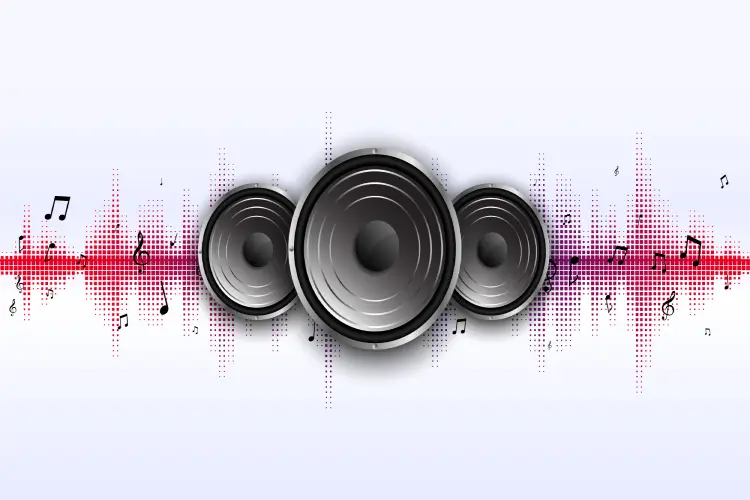Audio data is practically integral to modern society and people’s daily experiences, impacting music and podcasts, voice messages, and/or calls. They have altered the ways through which people interact, and are core to numerous multimedia endeavors.
An audio file can be of good quality depending on its format and also defines how, when and where it can be used. The nature of each format of audio file is to provide the quality, size of the file and what the user requires depending on the type of use.
In this particular article, various aspects of the commonly used audio file formats in the market have been discussed in detail to explain their usability and efficiency.
What is an Audio File?
An audio file is acoustical data in digital form intended for storage, playback or transfer through data processing systems and other media. Audio when captured is in a format that may be compressed, encoded or will be in its natural form once the recording is in digital form.
The qualities of the output sound as well as the size of the file and the compatibility of the media with other applications and devices depend on its format.
Audio files are generally divided into three categories based on how they compress sound data: there are three types of file compression, these include lossy, lossless and uncompressed files.
Types of Audio File Formats
WAV (Waveform Audio File Format)
WAV or Waveform Audio File Format is an uncompressed digital audio file which has the highest sampling frequency and therefore the highest quality of sound. It is mandatory in professional music production, particularly in the sectors of audio mixing, editing, and video production, thus earning its place on personal computers. I believe that WAV is suitable for such audio as songs, interviews as well as voice recordings in that it maintains the best sound quality.
- Description: WAV files are wave audio formats that do not compress the sound data at all which makes them suitable for big professional works like recordings and editing.
- Advantages: Is not changed in any way and is popular among professional settings.
- Disadvantages: They have serious disadvantages of large file sizes that can make them unimaginable to use particularly for other purposes other than streaming.
- File Extension: . wav
MP3 (MPEG Audio Layer 3)
MP3 is the favourite audio format globally which has been created by the Moving Picture Experts Group (MPEG). Like any other lossy file format, it can throw out certain data when compressing audio files to smaller sizes but with good sound quality. MP3 can be used for online sites that stream music and also it is convenient for casual listening.
- Description: MP3 is a lossy audio format at present, and it is well known for compressing the files and does also remove the data to minimize the file size to deliver fairly good sound quality for normal listening.
- Advantages: Small file size and widespread compatibility across devices.
- Disadvantages: Audio quality can suffer, especially at lower bitrates.
- File Extension: .mp3
AAC (Advanced Audio Coding)
The next one is AAC or Advanced Audio Coding it is also a lossy audio compression format, though its quality on the same bit rate is better compared to an MP3. It was devised as a constituent of MPEG-2 and later implemented as a constituent of MPEG-4.
Its purpose is to compress the audio while preserving high levels of quality. Besides being used in streaming and broadcasting on such services as YouTube and Apple Music, AAC offers stereo and multichannel audio options while being widely used in music and media.
- Description: AAC is even more lossy than MP3, yet, it offers higher quality at the same bit rates and is used in streaming and broadcasting.
- Advantages: Adequate sound quality with the same level of compression as that of MP3 format.
- Disadvantages: Using MP3 is more widespread than using an MP3.
- File Extension: . aac
Ogg Vorbis (OGG)
Ogg Vorbis is an example of a free, open-source that is much better than an MP3 at the same data rate. It is commonly used in streaming services such as Spotify, and game audio; it supports multichannel sound, Variable Bitrate and metadata tagging. As a codec, it may not have the same kind of backing by consumer devices that MP3 or AAC do, but it offers the best efficiency for streaming and storing audio.
- Description: Ogg Vorbis is a lossy type format and is open source which proves to be better than mp3 in quality per size in gaming and streaming.
- Advantages: Supports getting information from other sources; better sound quality in comparison with MP3; the program is free.
- Disadvantages: Some of the limitations of social web analytics include;
- File Extension: . ogg
FLAC (Free Lossless Audio Codec)
AAC stands for Advanced Audio Coding; it is a lossy audio format that is ideal for use by audio professionals and music lovers. It cuts the file size by between 30 and 60 % less than uncompressed file formats such as WAV while maintaining quality. FLAC also allows full UNICODE Unicode character set support and is often used for storing of music. It supports most of the hardware players, software and media libraries and the most frequently used file format is often in. flac extension.
- Description: FLAC stands for Free Lossless Audio Compression and it is a format favoured when a music file might be archived as it retains the quality of the sound while reducing the size of the file.
- Advantages: Higher compression rates than in uncompressed formats, but still maintaining more moderate file sizes as compared to the lossy formats that are at your disposal.
- Disadvantages: Some points of embedding also contain larger file sizes compared to lossy formats; it is not supported for every device.
- File Extension: . flac
WMA (Windows Media Audio)
Windows Media Audio (WMA) is one of the most popular compressed audio formats that exist in the world today, and it was created especially by Microsoft; the use of lossy compression is a speciality. It assures reasonably good sound quality and is easily compatible with Windows systems and most of the media players. WMA files are used for streaming, downloading and playback on Windows devices.
ALAC (Apple Lossless Audio Codec)
ALAC stands for Apple Lossless Audio Codec and it is Apple’s lossless codec developed for great audio playback on iTunes, iPhones, Macs and so on. Like FLAC, it allows loss-less audio compression, which makes it popular among users who want seamless integration with the Apple ecosystem and high sound quality. Apple Music now uses ALAC for the high resolution of up to twenty-four bit one hundred and ninety-two kilohertz.
- Description: Specifically, Apple’s proprietary lossless format ALAC also compresses the audio but does not lose any quality, it is developed to be used with Apple products.
- Advantages: Proper integration with Apple devices; tracks are as lossless as they can get.
- Disadvantages: Bigger file size; lower compatibility with devices that do not support the Apple ecosystem.
- File Extension: . m4a (ALAC encoded)
PCM (Pulse Code Modulation)
PCM stands for Pulse Code Modulation is an uncompressed audio format that encodes the analogue audio signal into digital form. It records sound by taking a piece of the continuous signal at equal time intervals and quantising them to binary numbers. PCM can further be described according to the sampling rate, expressed in kHz (e.g. 44. 1 kHz for CD quality), number of bits, which can range from 8 to 24 in current formats and number of channels, that may be mono, stereo or multi-channel.
- Description: PCM is an uncompressed format which converts the Analogue audio signals into a Digital format. It is often employed in audio CDs as well as recordings of high fidelity that are professional.
- Advantages: Cuts down all the distortion to the minimum and delivers the sound with the highest quality possible.
- Disadvantages: It has the drawback of having a penchant for large file sizes which makes it less suitable for nearly everyone’s use daily.
- File Extension: It can (. wav,. aiff).
AIFF (Audio Interchange File Format)
AIFF, with the full title of Audio Interchange File Format, is an audio container format originating from Apple for the Macintosh computer. It is akin to WAV however it is possible to store both, uncompressed data as well as a compressed one like ADPCM as well as MACE. AIFF files normally store uncompressed audio that results in large files as compared to formats such as MP3 and can support many channels.
- Description: AIFF also uncompressable is the Apple format similar to the WAV type which is used by professionals through Mac devices.
- Advantages: Clear audio; accommodates multiple configurations of channels.
- Disadvantages: Large file sizes; all the files are created on devices running Apple operating systems.
- File Extension: . aiff
Waveform Audio File Format
WAV, well known as WAVE (Waveform Audio File Format), is a subset of the Microsoft Resource Interchange File Format (RIFF) specification for storing computer audio files. The format does not compress the bitstream and saves the audio recordings with various sampling rates and bit rates.
- Wave (RIFF) audio format refers to formats employed to store audio files in computers. It is based on the Resource Interchange File Format (RIFF) and is preferably utilized in high-quality audio. Description: Introduced by Microsoft this lossy format, is meant for Windows devices with good compression and decent audio quality.
- Advantages: Small file size; effective Windows-based operating systems.
- Disadvantages: There is some support on non-Windows computers, however, it is very limited.
- File Extension: . wma
Conclusion
Choosing the appropriate format from the audio file format is based on the needs of the project. MP3 and AAC which are used in daily listening and streaming are examples of lossy formats that have moderate file sizes with comparatively good sound quality. If you are looking for audio that is of very good quality, then lossless formats that include FLAC and ALAC are always ideal as they retain the quality of sound as expected but are very large just like WAV and IFF formats that offer the best quality of audio that is very good but are larger. It is therefore important for one to be knowledgeable of the features of each of the two formats to determine the suitability of each format.

